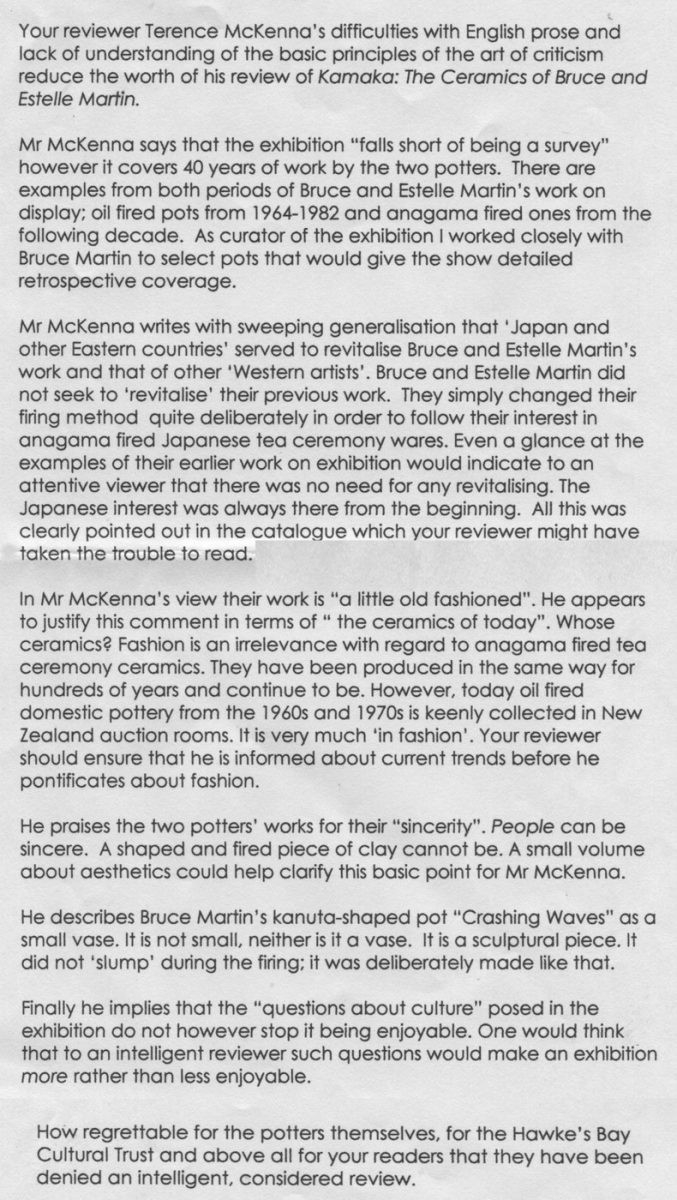Your reviewer Terence McKenna’s difficulties with English prose and lack of understanding of the basic principles of the art of criticism reduce the worth of his review of Kamaka: The Ceramics of Bruce and Estelle Martin.
Mr McKenna says that the exhibition “falls short of being a survey” however it covers 40 years of work by the two potters. There are examples from both periods of Bruce and Estelle Martin’s work on display; oil fired pots from 1964-1982 and anagama fired ones from the following decade. As curator of the exhibition I worked closely with Bruce Martin to select pots that would give the show detailed retrospective coverage.
Mr McKenna writes with sweeping generalisation that ‘Japan and other Eastern countries’ served to revitalise Bruce and Estelle Martin’s work and that of other ‘Western artists’. Bruce and Estelle Martin did not seek to ‘revitalise’ their previous work. They simply changed their firing method quite deliberately in order to follow their interest in anagama fired Japanese tea ceremony wares. Even a glance at the examples of their earlier work on exhibition would indicate to an attentive viewer that there was no need for any revitalising. The Japanese interest was always there from the beginning. All this was clearly pointed out in the catalogue which your reviewer might have taken the trouble to read.
In Mr McKenna’s view their work is “a little old fashioned”. He appears to justify this comment in terms of “the ceramics of today“. Whose ceramics? Fashion is an irrelevance with regard to anagama fired tea ceremony ceramics. They have been produced in the same way for hundreds of years and continue to be. However, today oil fired domestic pottery from the 1960s and 1970s is keenly collected in New Zealand auction rooms. It is very much ‘in fashion’. Your reviewer should ensure that he is informed about current trends before he pontificates about fashion.
He praises the two potters’ works for their “sincerity”. People can be sincere. A shaped and fired piece of clay cannot be. A small volume about aesthetics could help clarify this basic point for Mr McKenna.
He describes Bruce Martin’s kanuta-shaped pot “Crashing Waves” as a small vase. It is not small, neither is it a vase. it is a sculptural piece. It did not ’slump’ during the firing; it was deliberately made like that.
Finally he implies that the “questions about culture” posed in the exhibition do not however stop it being enjoyable. One would think that to an intelligent reviewer such questions would make an exhibition more rather than less enjoyable.
How regrettable for the potters themselves, for the Hawke’s Bay Cultural Trust and above all for your readers that they have been denied an intelligent, considered review.












Do you know something about this record?
Please note we cannot verify the accuracy of any information posted by the community.